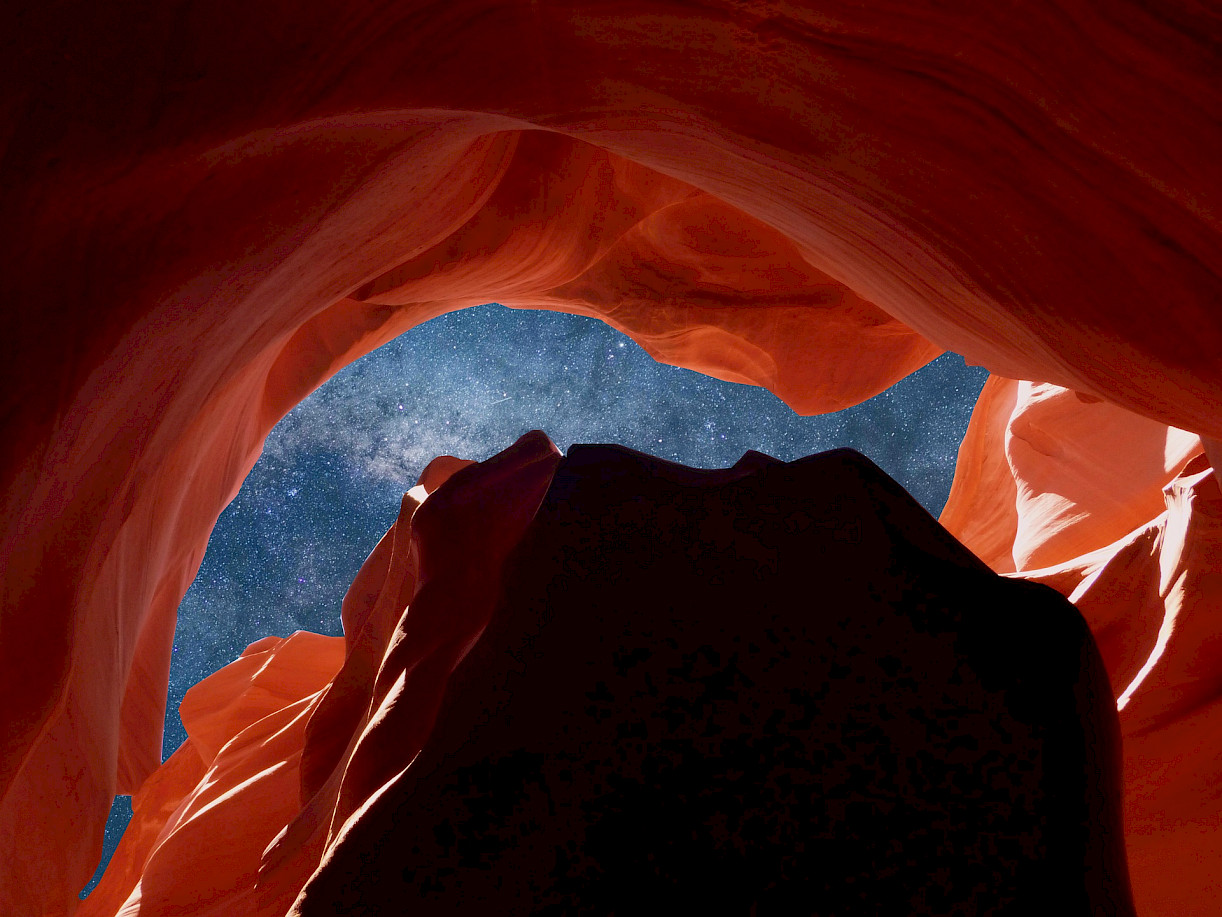Mother Nature's Light Show | Antelope Canyon
The Magic of Natural Light in Antelope Canyon, Utah
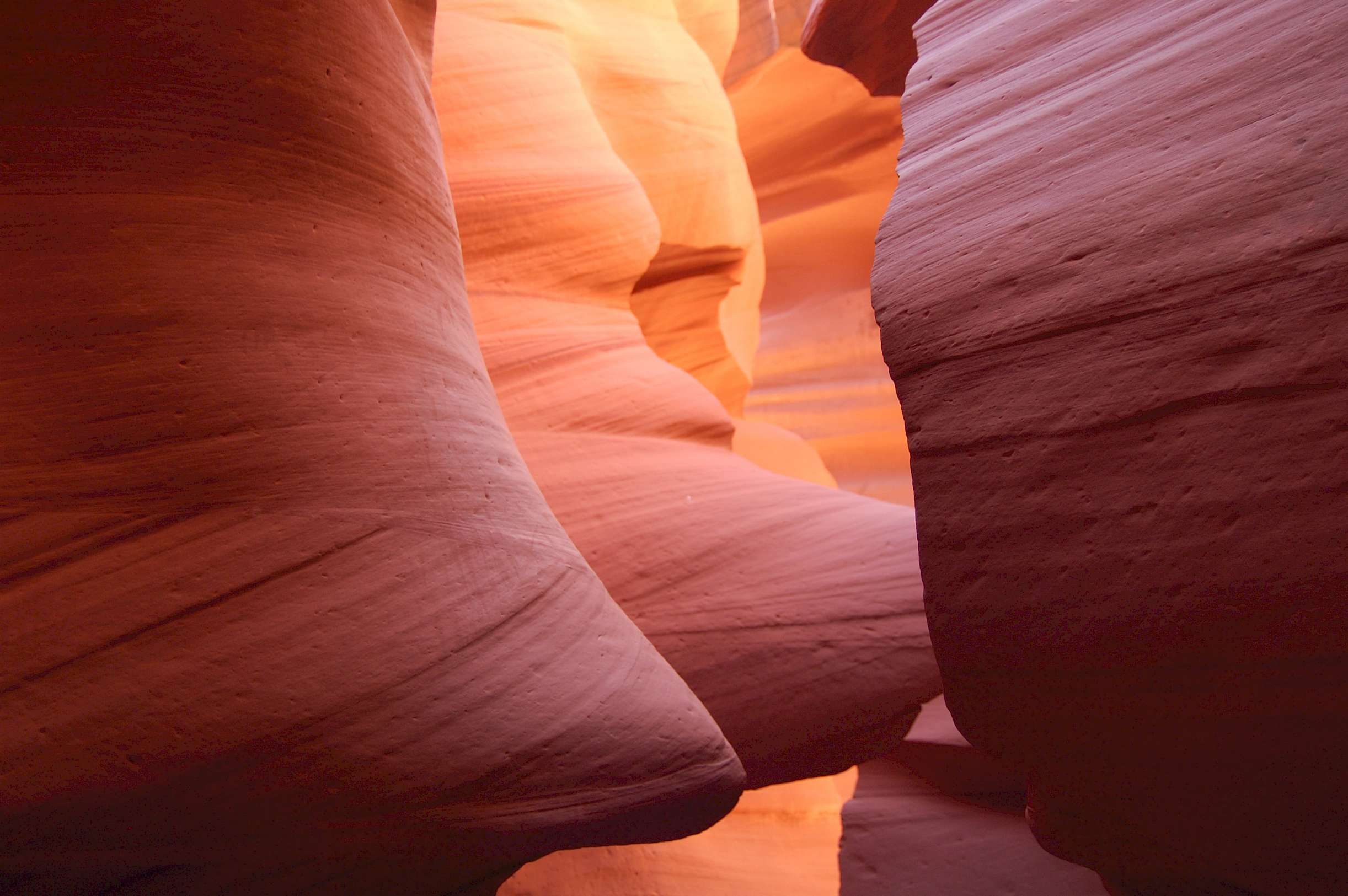
Sometimes destinations disappoint. In the case of Antelope Canyon located in the heart of the Navajo Nation, photos and videos just don’t do this park justice. Visitors are immersed in the swirling shades of creme, orange, pink, purple, and red in undulating rock formations that astound at every turn.
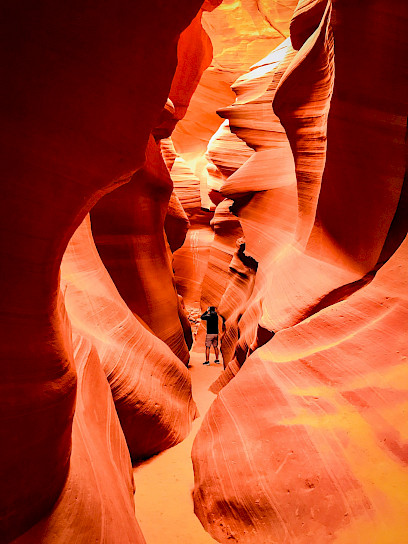
This temple of rock was created over thousands and thousands of years by wind, rain, and flash floods which carved the phantasmagorical shapes that we see today in this slot canyon. A geological curiosity, a slot canyon is formed when water seeps its way into fissures of bedrock. During times of drought, windblown sand polished the narrow walls into striated and swirling textures. The result is Antelope Canyon with its narrow Navajo sandstone passageways that slope down into the earth that is simply otherworldly. The shifting shadows of light as the sun moves across the sky and the ever-moving beams of filtered light glimmering down the walls of the canyon, make this experience truly unforgettable.
Antelope Canyon got its name from the herds of pronghorn antelope that once roamed free in this area centuries ago. Although it is not known exactly when Antelope Canyon was discovered by the Navajos, according to their oral history, this is an area where their cattle grazed during the winter months. Another Navajo story holds that a group refused to join the Long Walk of 1864 and took refuge in the Antelope Canyon, where their spirits and ancestors watched over them. A third story tells us that a young Navajo girl discovered the canyon when she was herding her sheep. Today, Antelope Canyon is a sacred place to the Navajos, it is symbolic of Mother Nature’s gifts and power, it was and is a spiritual experience for the Tribal Nation. Every four years the Navajo give thanks in a blessing ceremony to the natural elements that shaped the wondrous beauty of Antelope Canyon.
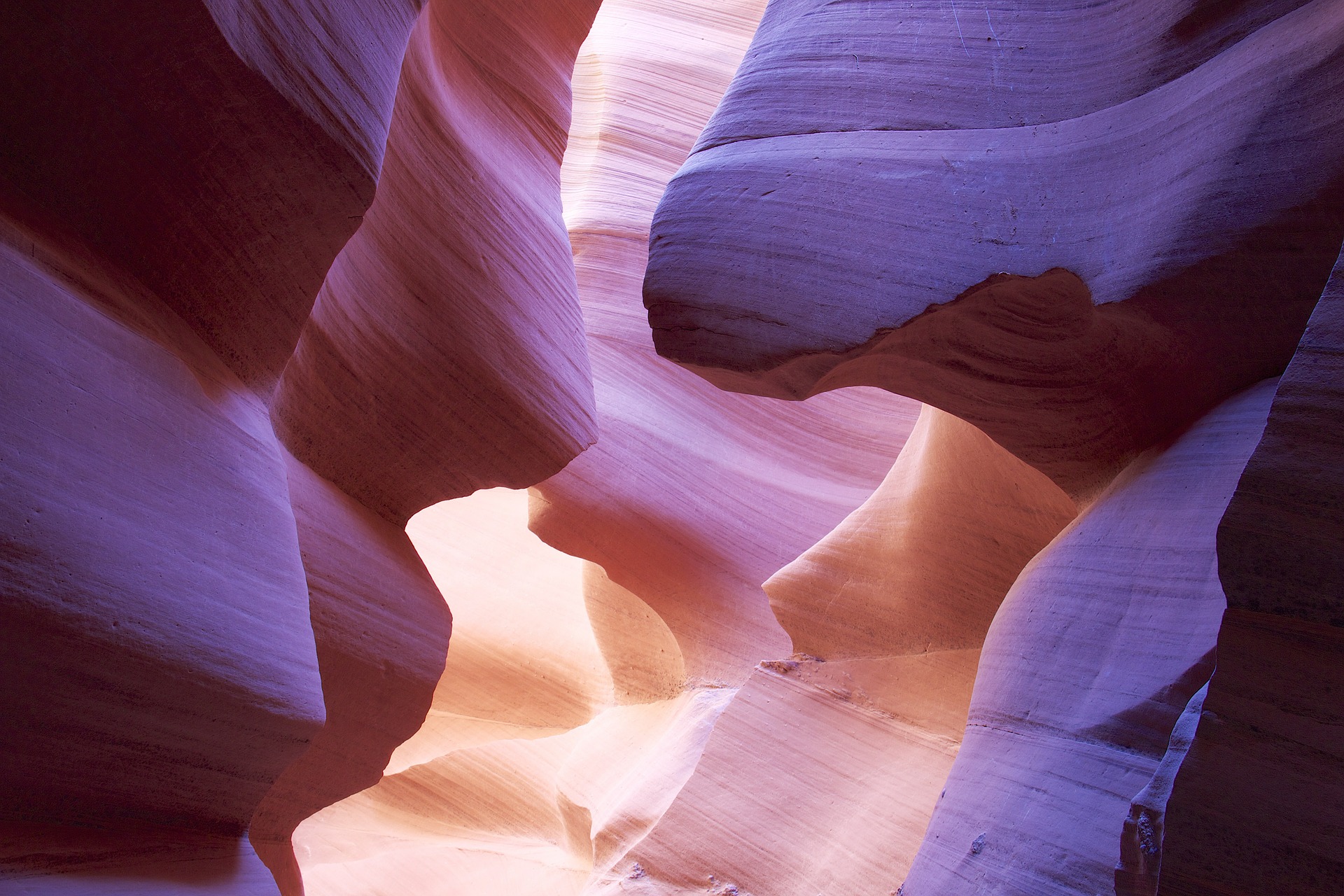
The Upper Antelope Canyon’s Native American name is Tse’bighanilini, which means “the place where water runs through rocks.” This is a spot of great natural beauty where the canyon walls rise more than 120 feet above the stream-bed. Known locally as “the crack,” it is the most popular destination in the canyon because of the way the light shines on its’ walls. Sunbeams pour through openings in the canyon’s roof creating a myriad of shades, textures, and colors that bounce around the walls of the canyon. As a matter of fact, Upper Antelope is the most photographed and most visited of all slot canyons in the American Southwest. In addition to its mind-blowing colors, the crack is easily accessible - it is an easy walk in and out.
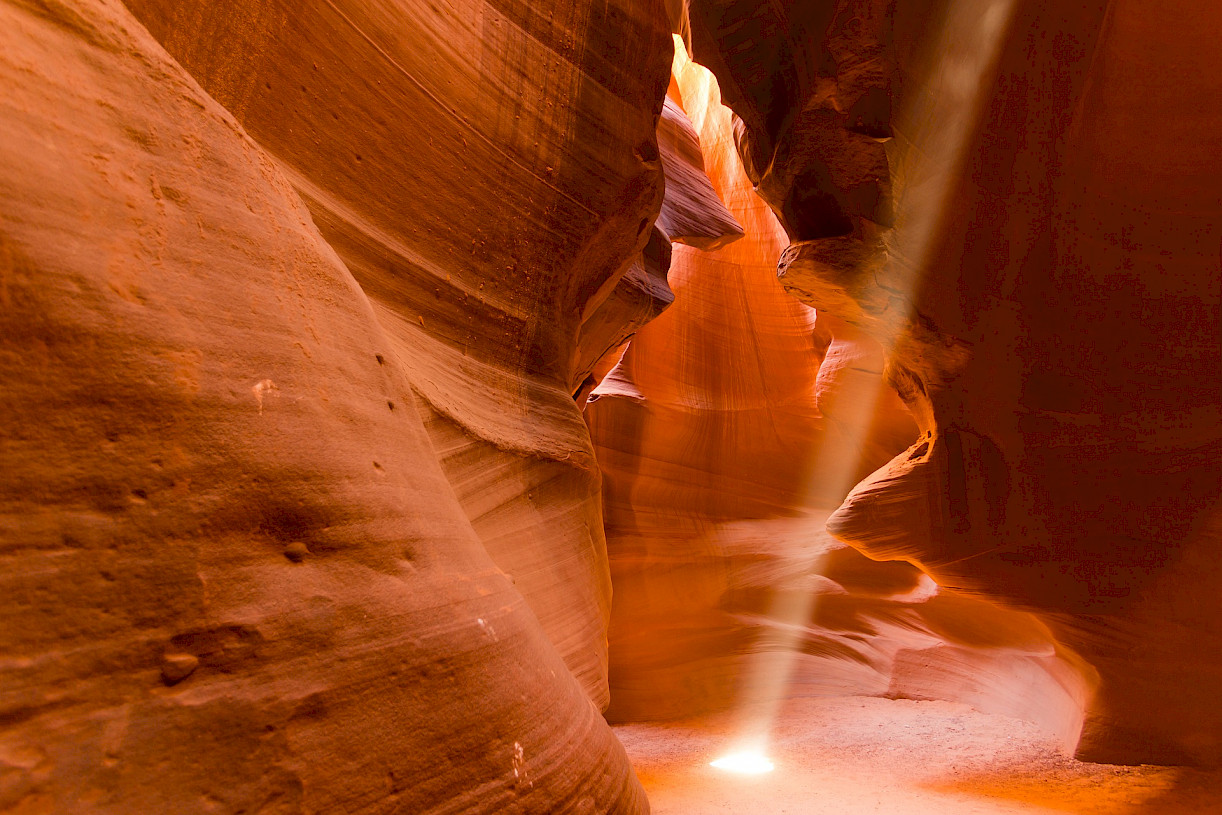
The Lower Antelope Canyon’s name, Hasdestwazi means “spiral rock arches,” and is for the more adventurous. Because it is underground, the Lower Canyon is much cooler than the crack. The Lower Canyon is V-shaped allowing plenty of sunlight to reflect off the canyons walls in a dazzling array of vibrant reds, oranges, yellows, pinks, and even purples. Most visitors contend that a visit to Lower Antelope is well worth the walk and that it is often less crowded here. Squeezing through the narrow walls and descending down into the canyon on a network of steel staircases and ladders is like exploring Mars!
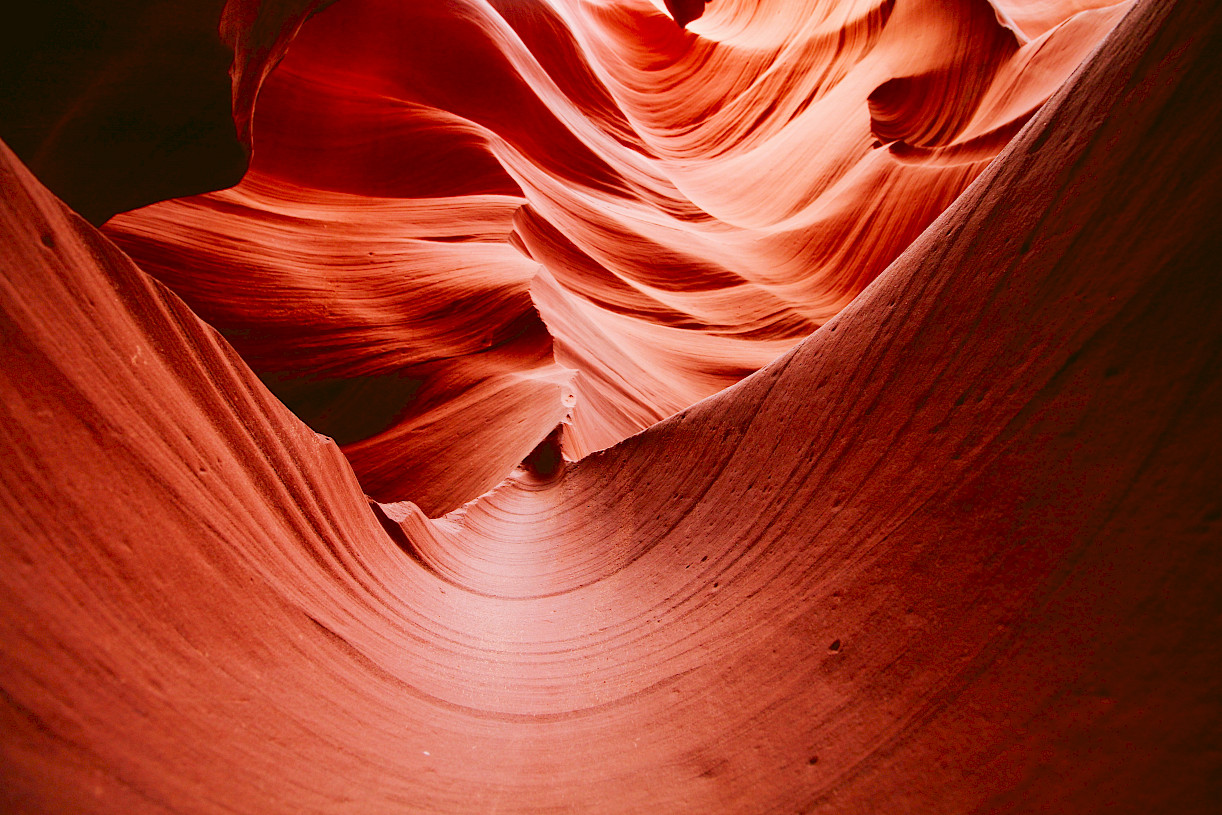
Antelope Canyon is also a photographer’s dream because of its many lighting effects. The light beams change constantly so it is best to have your camera at the ready so you don’t miss the shot. There are several interesting shapes within the Upper Antelope Canyon that make beautiful shots any time of day. Keep your eyes peeled for specific shapes including the heart, the wavelike rock formations known as the crack, and the corkscrew, found in Lower Antelope Canyon.
When visiting Antelope Canyon make sure you wear sturdy and comfortable shoes. This is Arizona and it is hot and dry, so don’t forget your bottled water and sunscreen. Keep in mind that you can’t take a backpack into Antelope Canyon, so whatever you take, you will have to carry in.
This is just one of the many National Parks that you will visit on our Tour of Utah’s National Parks.
